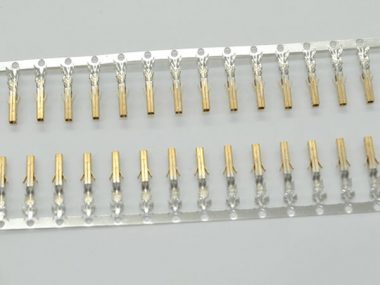Electrolytic Nickel/Gold is the originator of PCB surface treatment technology. It is plated with a layer of nickel and then a layer of gold on the surface conductor of the PCB. The principle is that after the nickel solution is prepared and the gold (commonly known as gold salt) is dissolved in the chemical solution, the pretreated circuit board is immersed in the electroplating cylinder (nickel-plating cylinder/gold-plating cylinder) and the current is applied to make the circuit board Nickel/gold plating is formed on the copper foil surface. Nickel electroplating is widely used in electronic products because of its high hardness, wear resistance, and resistance to oxidation.
ENIG’s full name is Electroless Nickel/Immersion Gold.
The advantage is that the “nickel” and “gold” can be attached to the copper without using a complex power supply device (rectifier), and its surface is also flatter than electroplating nickel/gold. This is especially important for microelectronic
parts and components that require high flatness.
The ENIG process generally goes through the processes of pickling, micro-etching, activation, electroless nickel plating, cleaning, and gold immersion.
The key step is nickel plating by autocatalytic reaction on the copper pad. Generally, the thickness of the nickel plating layer is controlled by parameters such as temperature, pH and additive concentration. Using the activity of freshly plated nickel, immerse the nickel-plated pads in acidic gold water. The gold is replaced from the solution to the surface of the solder layer through the chemical replacement reaction, and part of the nickel on the surface is dissolved into the gold water.
As long as the replaced gold completely covers the nickel layer, the replacement reaction stops automatically. Finally, after cleaning the dirt and potion residue on the surface of the pad, the ENIG process ends.
Flash gold also known as rapid gold plating。In fact, it is a “pre-gold plating” process for electroplating hard gold. It uses a larger current and a liquid tank with less gold. First, a gold-plated layer with a finer density and a thinner thickness is formed on the surface of the nickel layer, so as to facilitate the subsequent electroplating of gold-nickel or gold-cobalt alloy.
“Flash Gold” has less electroplating process, so its cost is much cheaper than real electroplating gold. However, because the “gold” layer is very thin, it generally cannot effectively cover the entire nickel layer, so it is easier to cause the circuit board to oxidize after being stored for a long time, thereby affecting the solderability.
“Pure gold” is actually softer, and “alloys” doped with other metals are harder and more resistant to friction, so the purer the gold, the softer it is.
Electroplating hard gold is actually an electroplating alloy (containing other elements such as cobalt, nickel, and the element content is less than or equal to 0.2%), so the hardness will be relatively hard. It is suitable for use in places that require force and friction. In the electronics industry, it is generally used as the contact surface of the connector, the edge contact point of the circuit board (commonly known as the “gold finger”)
Because of the principle of replacement, ENIG’s gold-plated layer is “pure gold”, so it is often classified as a kind of “soft gold”.





